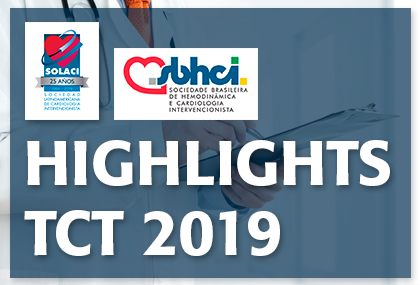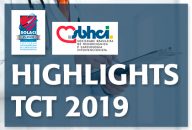Courtesy of SBHCI. This interesting study presented at TCT 2019 and simultaneously published in Am J Cardiol tells us PCI in stable coronary artery disease cannot lower risk in patients with severe aortic stenosis undergoing transcatheter aortic valve replacement (TAVR). Unless patients are symptomatic, most coronary artery lesions do not need revascularization according to researchers.…
TCT 2019 | PARTNER 3: Obvious Short-Term Quality of Life Improvement, but What Happens Afterwards?
Courtesy of SBHCI. Patients with severe aortic stenosis and low surgical risk showed decreased mortality, stroke, and heart failure hospitalization at one year with transcatheter aortic valve replacement compared with surgery. Improved quality of life may seem an obvious consequence, but until now that was mere speculation. This work, presented at the TCT 2019 Scientific Sessions…
TCT 2019 | PARTNER 2A at 5 Years: In Intermediate-Risk Patients, TAVR Is Still Head-to-Head with Surgery
Courtesy of the SBHCI. The 2-year results of the PARTNER 2A trial showed that transcatheter aortic valve implantation has a result similar to that of surgery in patients with aortic stenosis and intermediate surgical risk. We lacked long-term data, both clinical and related to prosthesis function. Now, at TCT 2019, researchers presented the 5-year data for this…
TCT 2019 | PORTICO: This vs. Any Other Valve Available in the Market
Courtesy of SBHCI. This work, presented at the TCT 2019 Scientific Sessions, showed the 30-day safety and 1-year efficacy of self-expanding prosthesis Portico compared with all valves approved by the US Food and Drug Administration (FDA) for the treatment of patients with severe aortic stenosis and high surgical risk. Between 2014 and 2019, researchers enrolled 750 patients…
Very Encouraging Results for TAVR in Low-Risk Patients
Courtesy of Dr. Carlos Fava. About 12% of patients >75 years old have aortic stenosis. In 3%-4% of them, such disease is severe. Transcatheter aortic valve replacement (TAVR) has already proven to be beneficial for extreme-, high-, and intermediate-risk patients. Regarding low-risk patients, we currently have different analyses; two of them are randomized and their results are…
TAVR and Pacemakers, New Strategies
Courtesy of Dr. Carlos Fava. TAVR has been shown beneficial and is constantly being advanced onto lower risk populations, but at present, it is limited (perhaps most importantly in aortic tricuspid valves) by the need for permanent pacemaker implantation (PPMI), especially when it comes to self-expandable valves, as the latest study on low risk populations…
The Written (Worlwide TAVI Experience) Survey
Letter from Dr. José Armando Mangione, President of SOLACI. Dear Colleagues, We kindly request you to take part in our survey about cotemporary TAVI practices in Latin American (LATAM) centers. It has been developed for the WRITTEN study, which assessed TAVI practices in 250 centers around the world (29 in LATAM) between March and September 2015.…
TAVR in Bicuspid Has the Same Results in Surgery at Hospital Level
Courtesy of Dr. Carlos Fava. Bicuspid aortic stenosis patients (bicuspid AS) represent a small group and have not been included in the larger transcatheter aortic valve replacement (TAVR) studies, since they present different morphology and asymmetric calcification, which might come along with more paravalvular leak and less accurate positioning. Between 2012 and 2016, 475,315 patients…
The Real Impact of Peripheral Artery Disease in TAVR
Courtesy of Dr. Carlos Fava. The real incidence of peripheral artery (PAD) disease in TAVR remains unclear. Different reports still estimate it is between 10 and 46%, but they have shown it has a negative impact in evolution. 51,685 TAVR patients were analyzed. 12,740 of these patients presented PAD (24.6%). PAD patients tended to be…
Experts Reach Consensus on Post TAVR Pacemaker Indication
This new consensus published this week in J Am Coll Cardiol has provided us with an algorithm to manage conduction disturbances after transcatheter aortic valve replacement. This consensus is intended to reduce potential deaths caused by conduction disturbances and, at the same time, reduce unnecessary definite pacemaker implantation. This document is a big step ahead…







